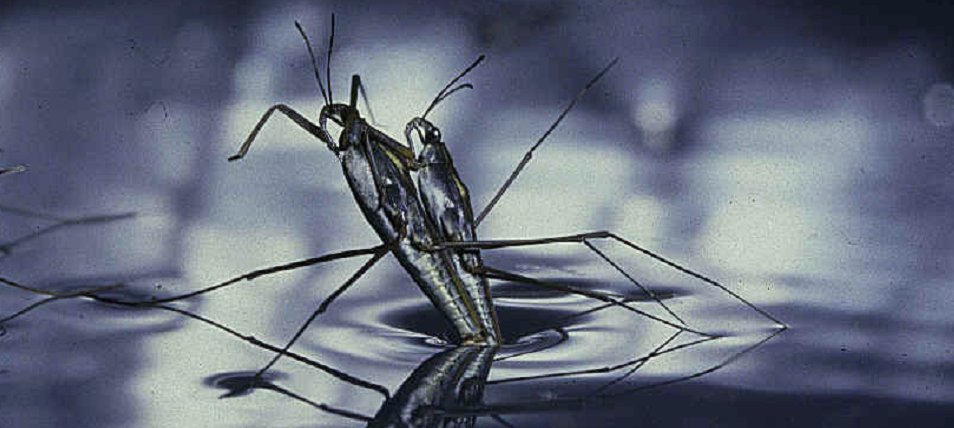Paper for discussion 9
Sexual selection

Mating in water striders
www.nature.com
Question for tutorial
How does sexual conflict\(^1\) lead to the evolution of secondary sexual characters\(^2\)?
\(^1\)Defined as occurring when traits favored in reproductive competition in one sex are costly for members of the other sex.
\(^2\)Defined as traits that differentiate the sexes (e.g., occur in males only) that are not directly involved in reproduction.
Required readings
Arnqvist, G. and L. Rowe. 2002. Antagonistic coevolution between the sexes in a group of insects. Nature 415: 787-789.
(Ignore the phylogenetic comparative methods in your reading - treat the “contrasts” as though they are simply the traits)
Additional, optional references
Dougherty, L. R., E. van Lieshout, K. B. McNamara, J. A. Moschilla, G. Arnqvist, & L. W. Simmons. 2017. Sexual conflict and correlated evolution between male persistence and female resistance traits in the seed beetle Callosobruchus maculatus." Proc. R. Soc. Lond. B 284: 20170132.
Arnqvist, G. and L. Rowe. 2005. Sexual conflict. Princeton University Press, Princeton, N.J.
Gavrilets, S., G. Arnqvist, and U. Friberg. 2001. The evolution of female mate choice by sexual conflict. Proceedings of the Royal Society of London B 268: 531-539.
Holland, B. and W. R. Rice. 1998. Chase-away sexual selection: antagonistic seduction versus resistance. Evolution 52: 1-7.
Perry, J. C., C. J. Garroway, and L. Rowe. 2017. The role of ecology, neutral processes and antagonistic coevolution in an apparent sexual arms race. Ecology Letters 20: 1107-1117.
Pizzari, T. and R. R. Snook. 2003. Perspective: sexual conflict and sexual selection: chasing away paradigm shifts. Evolution 57: 1223-1236.
Rice, W. R. 1996. Sexually antagonistic male adaptation triggered by experimental arrest of female evolution. Nature 381: 232-234.
© 2009-2022 Dolph Schluter